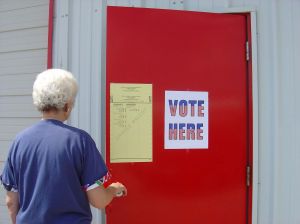Voters will have three opposing Los Angeles marijuana ordinances to choose from when the election rolls around in May. 
Our Los Angeles marijuana lawyers know that Ordinance No. 182443, proposed by councilman Paul Koretz, passed 8-4, and has gained the support of activists with Americans for Safe Access, the Greater Los Angeles Collectives Alliance and the United Food and Commercial Workers Union – all of which had previously backed another measure that was quite similar.
All three measures will remain on the ballot – it’s too late to remove any at this point – but those activist groups say they are willing to throw their support behind the city council measure, which they view as a fair compromise. Leaders of those groups say they are more likely to be successful if they can join forces with city leaders as well. Unfortunately, both of those measures are significantly more restrictive than the first.
Any one of the three ordinance measures are going to allow for at least some dispensaries to remain open, albeit with a fair amount of restrictions. In that sense, this is certainly a far better alternative than what we were facing down last year: An outright ban. The ban had been passed by city leaders in July and was set to be enforced by September. The city never actually got that far, though, because activists groups quickly rounded up more than enough signatures to approve a ballot measure that would have struck the ban from the books shortly after it went into effect.
Rather than go through the process of enacting the ban only to soon after be forced to rescind it, council scrapped it with an 11-2 vote in October. But they haven’t given up on enacting some type of restrictions. The city tried a similar effort back in 2007, with a moratorium on dispensaries. It was ineffective, and loopholes caused the number of dispensaries to balloon to well over 1,000, by some estimates.
But now council is giving it another shot. The new ordinance would allow only about 135 dispensaries to remain open – those that have been operational since September 2007. Additionally, qualifying dispensaries would have to meet numerous other requirements and standards, including zoning criteria that require them to be a certain distance from churches and schools. Additionally, the measure would increase local taxes on marijuana sales from $50 for every $1,000 in sales to $60 for every $1,000 in sales.
This takes pieces from the other two proposed measures.
The Regulation of Medical Marijuana for Safe Neighborhoods and Safe Access ordinance, for example, would increase taxes, but it wouldn’t limit the number of dispensaries allowed to operate within city limits.
The Medical Marijuana Collectives Initiative Ordinance would not raise taxes, but it would limit the number of marijuana dispensaries to about 100, and would provide limited immunity from enforcement of those facilities that have been open since September 2007, haven’t closed for more than three months except to relocate in response to zoning concerns, passes annual local police background checks and remain a certain distance from from schools, parks, churches and other designated areas.
Some council members are against all three measures, saying storefront marijuana sales should be prohibited outright. But this view doesn’t address the issue of safe patient access. Either way, it doesn’t matter because voters were going to decide on at least one of the other two regardless.
The Los Angeles CANNABIS LAW Group represents growers, dispensaries, collectives, patients and those facing marijuana charges. Call us at 949-375-4734.
Additional Resources:
L.A. City Council Places Medical Marijuana Measure on Ballot, Jan. 29, 2013, By Howard Fine, Los Angeles Business Journal
More Blog Entries:
Third L.A. Marijuana Initiative, Sponsored by Council, To Be Considered, Jan. 23, 2013, Los Angeles Marijuana Lawyer Blog
